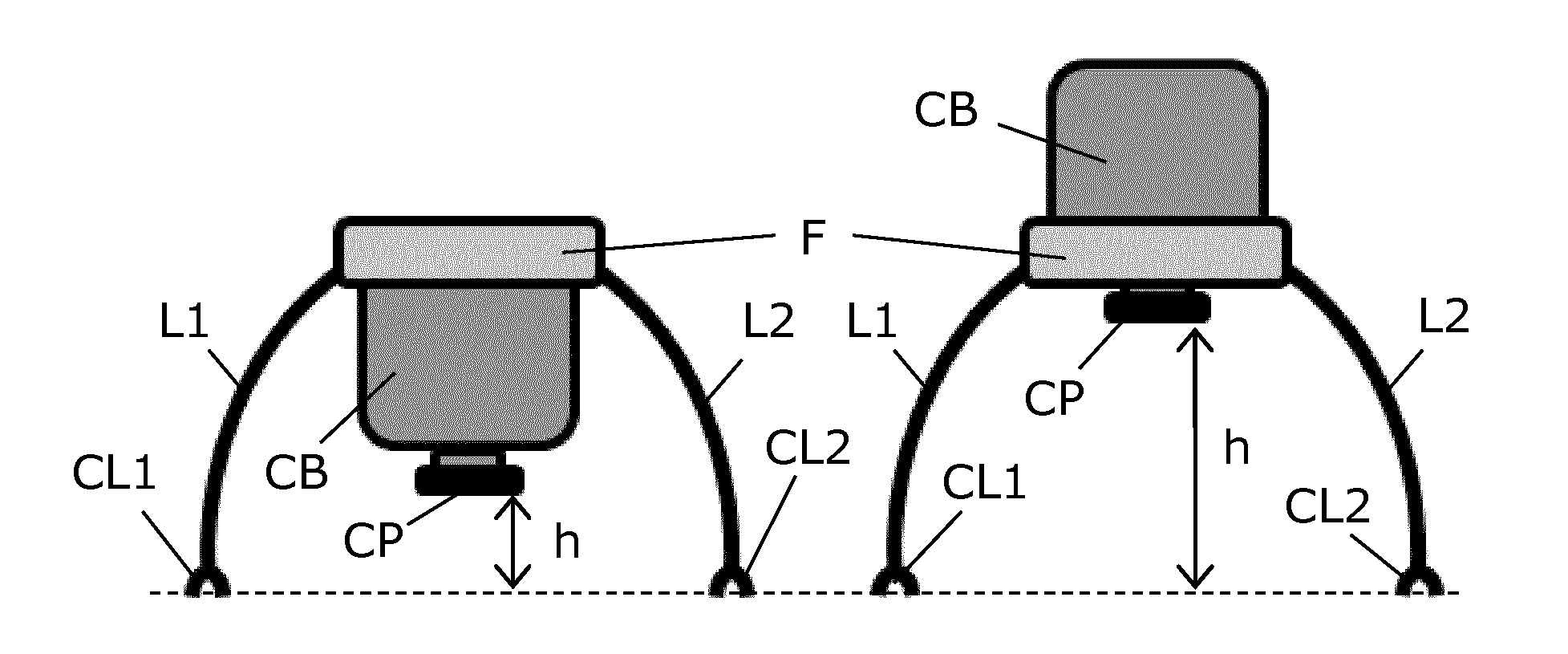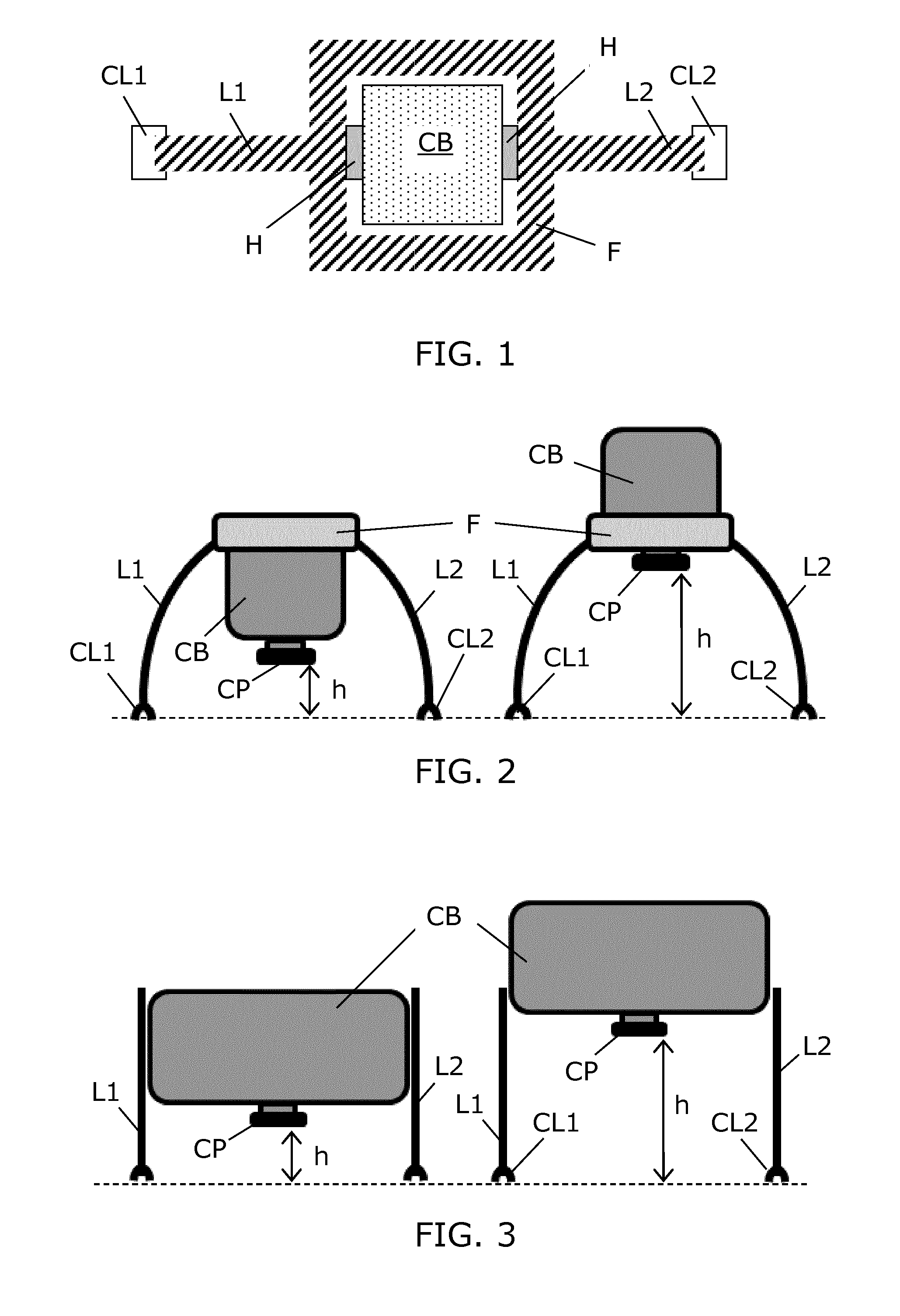Moving box automated cardio pulmonary resuscitation device
a moving box and pulmonary resuscitation technology, applied in the field of medical devices, can solve the problems of long manual cpr time, difficult control, and difficult to perform in a consistent high-quality manner, and achieve the effect of reducing non-active cpr time and speeding up initial setup
- Summary
- Abstract
- Description
- Claims
- Application Information
AI Technical Summary
Benefits of technology
Problems solved by technology
Method used
Image
Examples
Embodiment Construction
[0041]FIG. 1 illustrates a CPR device embodiment seen from above. The CPR device comprises a supporting structure with two legs L1, L2 shaped to accommodate space for the patient's thorax between the two legs L1, L2. The two legs L1, L2 are rigidly connected to a frame F. The two legs L1, L2 each has a clamp mechanism CL1, CL2 arranged for engagement with corresponding clamp mechanisms on each side of an associated backboard. Hereby, an operator can clamp the supporting structure onto a backboard, such that the supporting structure is locked in position onto the backboard. Preferably, the legs L1, L2 and the frame F are rigidly connected and shaped such that the clamp mechanisms CL1, CL2 fit onto the clamp mechanisms on the backboard. Hereby, the operator can easily position the CPR device and clamp it onto the backboard.
[0042]A compression box CB is arranged within the frame F, and the compression box CB comprises an enclosure containing a plunger mechanism, and a processor arrange...
PUM
 Login to View More
Login to View More Abstract
Description
Claims
Application Information
 Login to View More
Login to View More - R&D
- Intellectual Property
- Life Sciences
- Materials
- Tech Scout
- Unparalleled Data Quality
- Higher Quality Content
- 60% Fewer Hallucinations
Browse by: Latest US Patents, China's latest patents, Technical Efficacy Thesaurus, Application Domain, Technology Topic, Popular Technical Reports.
© 2025 PatSnap. All rights reserved.Legal|Privacy policy|Modern Slavery Act Transparency Statement|Sitemap|About US| Contact US: help@patsnap.com



